'I feel very safe here': Staff, users give an inside look at Edmonton's largest shelter provider
Half a dozen staff expeditiously fold, sort and bag piles of blankets at Hope Mission’s distribution warehouse off Argyll Road.
This is the site of Hope’s commercial laundry where about 1,400 blankets and 500 towels are washed each day.
“The whole operation has to be basically just-in-time delivery for the people using our shelters. So it becomes a pretty sophisticated logistics operation to make sure we have everything on hand downtown that we need to,” said Director of Homelessness Programs Tim Pasma.
This 30,000 square foot warehouse — supporting Hope’s shelters — opened in September.
It’s about six times bigger than the organization’s former space.
“The running joke around here is we've already filled it up, we need another one,” laughed Pasma.
The building houses administration, clothes, food and furniture donations, a thrift shop and Hope’s school lunch program that provides eight school divisions about 7,000 meals a week.
“There’s a lot of great things happening here. And I think it just kind of speaks to the way Hope Mission — through its almost 100-year history — has been trying to meet the needs for people here in the province of Alberta,” said Pasma.
Growing numbers
Pasma says there is enough shelter space in Edmonton to meet current demand but the need is growing.
He says the two main factors driving homelessness are mental health and addictions challenges and a lack of appropriate housing.
“There’s a real need for spaces that support folks with low mobility or chronic health conditions, mental health and addiction challenges. The range of that kind of need is pretty significant.
“The opioid crisis, other substance-use challenges do create another layer of complexity that we're dealing with.”
Pasma says there’s also been a “significant increase” in newcomers and refugees since last May.
“We’re seeing about 60 new registrations for that demographic each month. We’re seeing between 40 and 50, sometimes up to 60 per night, staying in shelters.”
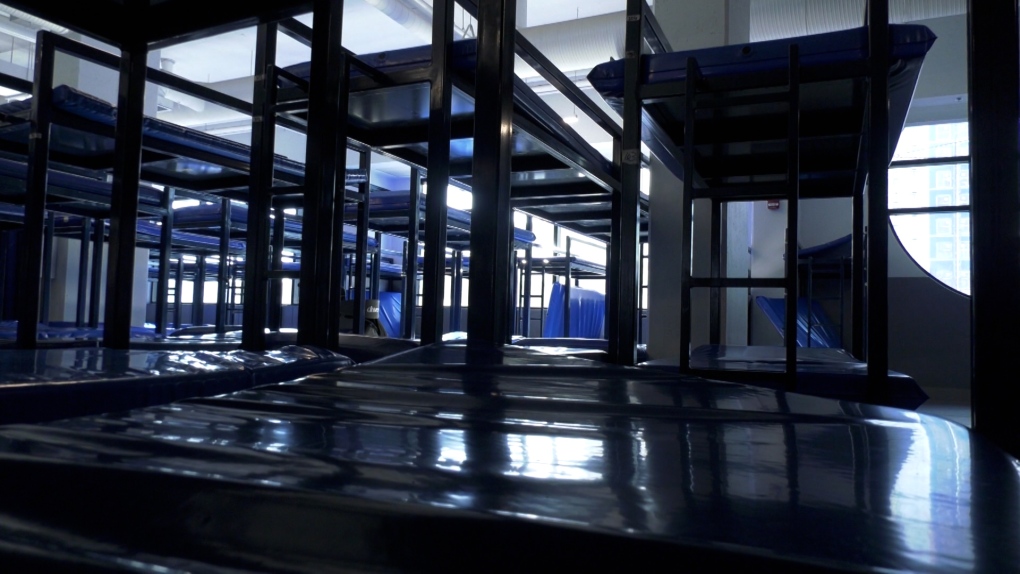 Shelter beds at the Herb Jamieson building in downtown Edmonton in February 2024. (CTV Edmonton)
Shelter beds at the Herb Jamieson building in downtown Edmonton in February 2024. (CTV Edmonton)
Between Hope’s main building, the recently rebuilt Herb Jamieson Centre and Hope’s dedicated women’s space — in the Karis Centre — the organization offers more than 800 beds with the ability to expand to 1,000 in extreme cold.
“That's when a lot of people, everybody is coming into our doors, you know, looking for shelter space or warming or other support. That's when we see the spike in numbers that's very significant,” said Pasma.
‘It’s tough to find a place out there’: shelter user
Todd Smith has spent the past four months at the Herb Jamieson Centre.
He has been staying at Hope’s shelters on and off since 2019.
“I hate to put it on her but…girlfriend died. I had a great job in Calgary and nice house, kids…and she passed away unexpectedly. I didn't deal with that real well. That’s what brought me here basically. I just started drinking and doing everything not healthy.”
The 63-year-old is retired.
He has a prosthetic leg and receives Assured Income for the Severely Handicapped (AISH) but still finds it difficult to get housing.
“$1,400 for a one-bedroom apartment. You need a roommate and you’ve got to be choosy about who you're gonna live with.
“Maybe that’s something the city could do. Lowering the damage deposit or eliminating it altogether.”
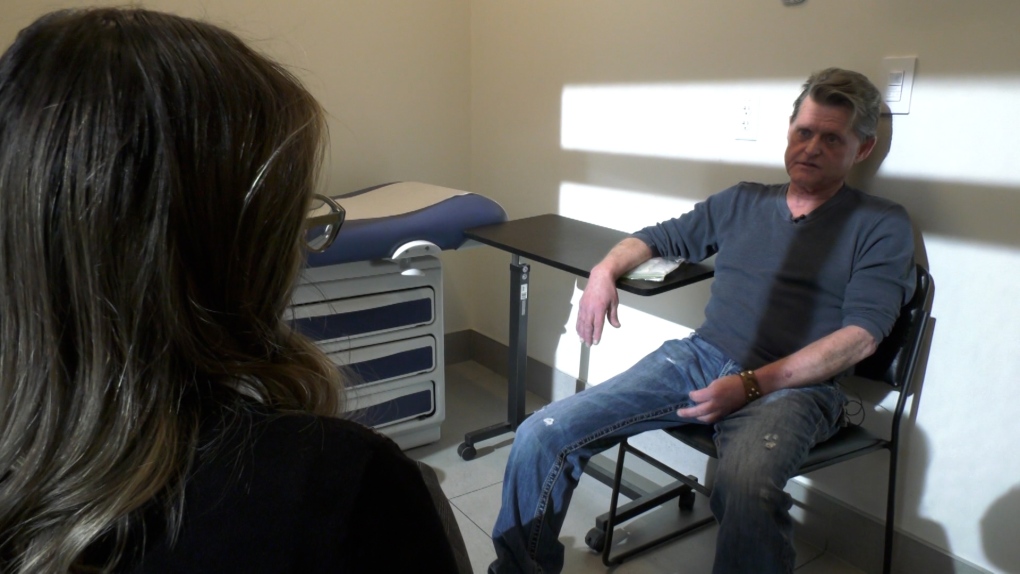 Shelter user Todd Smith speaks to CTV Edmonton's Nicole Weisberg in February 2024. (CTV Edmonton)
Shelter user Todd Smith speaks to CTV Edmonton's Nicole Weisberg in February 2024. (CTV Edmonton)
Smith also says despite the help of housing workers, landlords will judge him for coming from shelter.
“Because they've had some bad experiences, right? So now everybody from Hope Mission is going to be a bad experience. And so we don't get much of a break that way.”
Smith says he feels “very safe” at Hope Mission adding, “I've never seen anybody get robbed. I've never been robbed.”
He says once you get settled in, time can go by quickly.
“You get involved in the environment around here and meet people. You have friends and you're not really out looking for a place to live. And then you get a little kick in the butt.”
‘We do not want people to be here on an ongoing basis’: staff
While Hope Mission aims to make people comfortable, Pasma says the goal is for them to move on.
“That’s why we offer housing services. We offer ID services, social work, nursing and medical care. We also offer connections to addiction treatment and recovery services.”
In recent months, encampment residents have complained to CTV News Edmonton about shelter safety and rules that are too prohibitive.
Pasma believes there’s misinformation about city shelters and the services they provide.
“It’s a 24/7 facility but we also don’t have a stay restriction, so if someone needs to stay for a long time they can.
“We actually have intox shelters that support people that are more intoxicated because we know that those folks are going to need more regular attention, regular rounds, and potentially lifesaving medical care.”
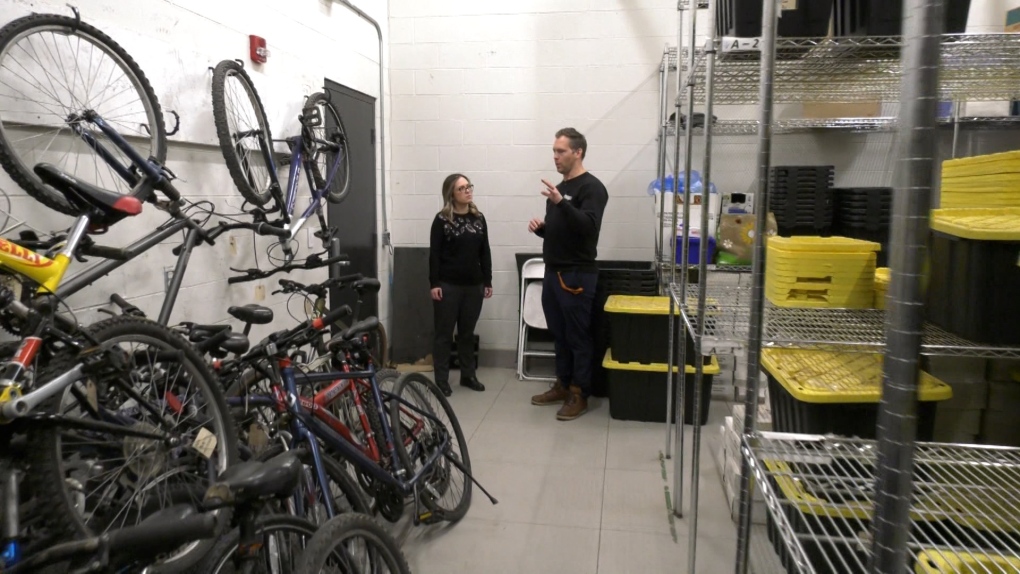 Director of Homelessness Operations Tim Pasma discusses shelter operations in February 2024. (CTV Edmonton)Hope Mission has space for couples and people who identify as gender neutral.
Director of Homelessness Operations Tim Pasma discusses shelter operations in February 2024. (CTV Edmonton)Hope Mission has space for couples and people who identify as gender neutral.
It also has bins and lockers for storage as well as space for bicycles and amnesty totes for prohibited items.
“Items like drugs and alcohol or if there’s a minor weapon or sharp object or that kind of thing.
“The reason we do that is to make shelter more accessible to people who otherwise wouldn’t come to shelter,” said Pasma.
Easing pressure on essential services outside shelter
Some of Hope Mission’s services can take pressure off local health and police agencies.
Its 24/7 rescue vans respond to calls from the public offering rides, essential supplies like water and on-the-spot care.
“EMS especially if they’re attending to someone that’s not in need of emergency medical care and transport to hospital, we’ll take that call for them. Support that person and they can move on to the next thing that might be more emergent,” said Pasma.
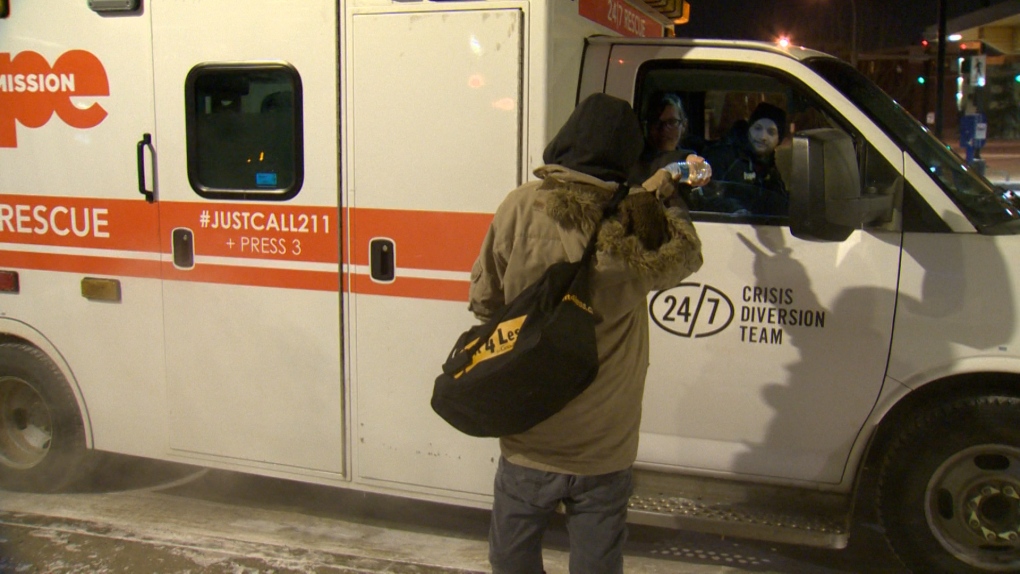 Hope Mission staff hand out water in this undated photo. (CTV Edmonton)
Hope Mission staff hand out water in this undated photo. (CTV Edmonton)
The Herb Jamieson Centre also has a nursing-based clinic with more than a dozen staff including RPNs (registered psychiatric nurses), paramedics and health-care aides.
“The clients that are here, I mean, most people are aware that they are experiencing a variety of health concerns.
“They also have a lot of difficulty accessing health services in the city. Some of the most essential things to see a doctor, you know, you need to have your ID, you need to be able to get to that appointment and get back.
“So being able to be inside the shelter, one helps us be able to be where they already are,” said Beth Klingenberg, Hope Mission’s manager of health services.
Wounds are one of the most common problems the clinic sees.
“Burns…so a lot of our clients will use fires or versions of fires now to keep warm. Sometimes, you know, they have pipes or smokes that they do that they kind of just forget and might burn themselves.
“We talk a lot about, you know, winter and frostbite but in the shoulder seasons, when we have rain and wet snow and stuff, the wet clothing and everything can really break down skin,” said Klingenberg.
There’s also many overdoses on-site which is why having paramedics on staff is considered essential.
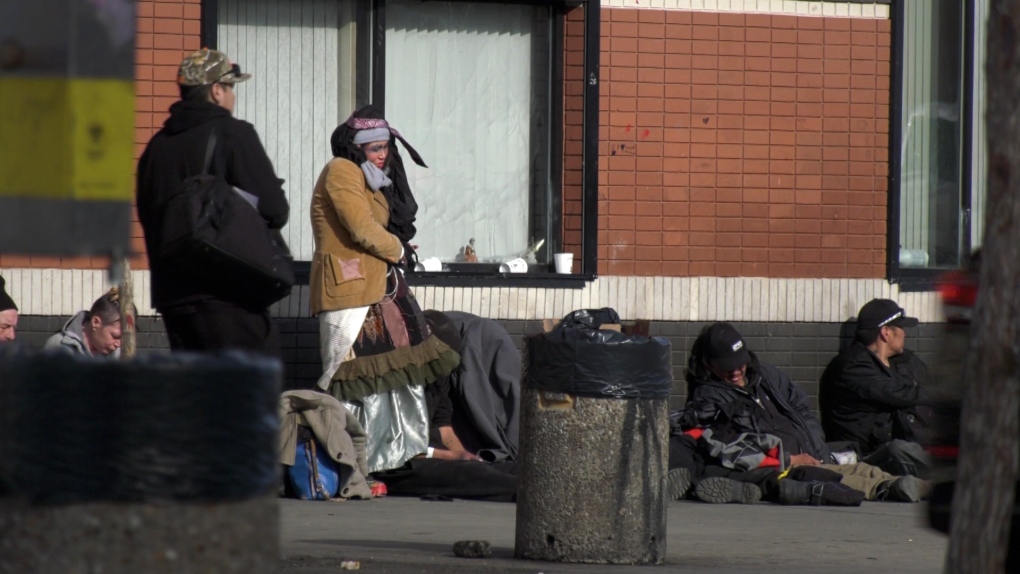 People wait outside Hope Mission's main building in February 2024. (CTV Edmonton)
People wait outside Hope Mission's main building in February 2024. (CTV Edmonton)
Ready to move on
Smith says he can’t imagine living outside but while living in shelter, he’s gained some insight into those who do.
“You sit there and say, ‘How can that be possible? In the middle of winter sleeping in a tent?’ That's very foreign to me. But I have talked to a few people that do that and they're quite happy with it.”
Despite the challenges he’s faced moving out, he’s determined to leave soon.
“I’ve never had a bad day here. I mean, but at the same time I understand there’s people getting released from hospitals, nowhere to go.
“When I move again, it'll be my last move. I'm 63 years old and I want to find a place to live.”
CTVNews.ca Top Stories

BREAKING 5 rescued after avalanche triggered north of Whistler, B.C. RCMP say
Emergency crews and heli-skiing staff helped rescue five people who were caught up in a backcountry avalanche north of Whistler, B.C., on Monday morning.
Quebec fugitive killed in Mexican resort town, RCMP say
RCMP are confirming that a fugitive, Mathieu Belanger, wanted by Quebec provincial police has died in Mexico, in what local media are calling a murder.
Bill Clinton hospitalized with a fever but in good spirits, spokesperson says
Former President Bill Clinton was admitted Monday to Georgetown University Medical Center in Washington after developing a fever.
Trump again calls to buy Greenland after eyeing Canada and the Panama Canal
First it was Canada, then the Panama Canal. Now, Donald Trump again wants Greenland. The president-elect is renewing unsuccessful calls he made during his first term for the U.S. to buy Greenland from Denmark, adding to the list of allied countries with which he's picking fights even before taking office.
Pioneering Métis human rights advocate Muriel Stanley Venne dies at 87
Muriel Stanley Venne, a trail-blazing Métis woman known for her Indigenous rights advocacy, has died at 87.
King Charles ends royal warrants for Ben & Jerry's owner Unilever and Cadbury chocolatiers
King Charles III has ended royal warrants for Cadbury and Unilever, which owns brands including Marmite and Ben & Jerry’s, in a blow to the household names.
Man faces murder charges in death of woman who was lit on fire in New York City subway
A man is facing murder charges in New York City for allegedly setting a woman on fire inside a subway train and then watching her die after she was engulfed in flames, police said Monday.
Canada regulator sues Rogers for alleged misleading claims about data offering
Canada's antitrust regulator said on Monday it was suing Rogers Communications Inc, for allegedly misleading consumers about offering unlimited data under some phone plans.
Multiple OnlyFans accounts featured suspected child sex abuse, investigator reports
An experienced child exploitation investigator told Reuters he reported 26 accounts on the popular adults-only website OnlyFans to authorities, saying they appeared to contain sexual content featuring underage teen girls.
































